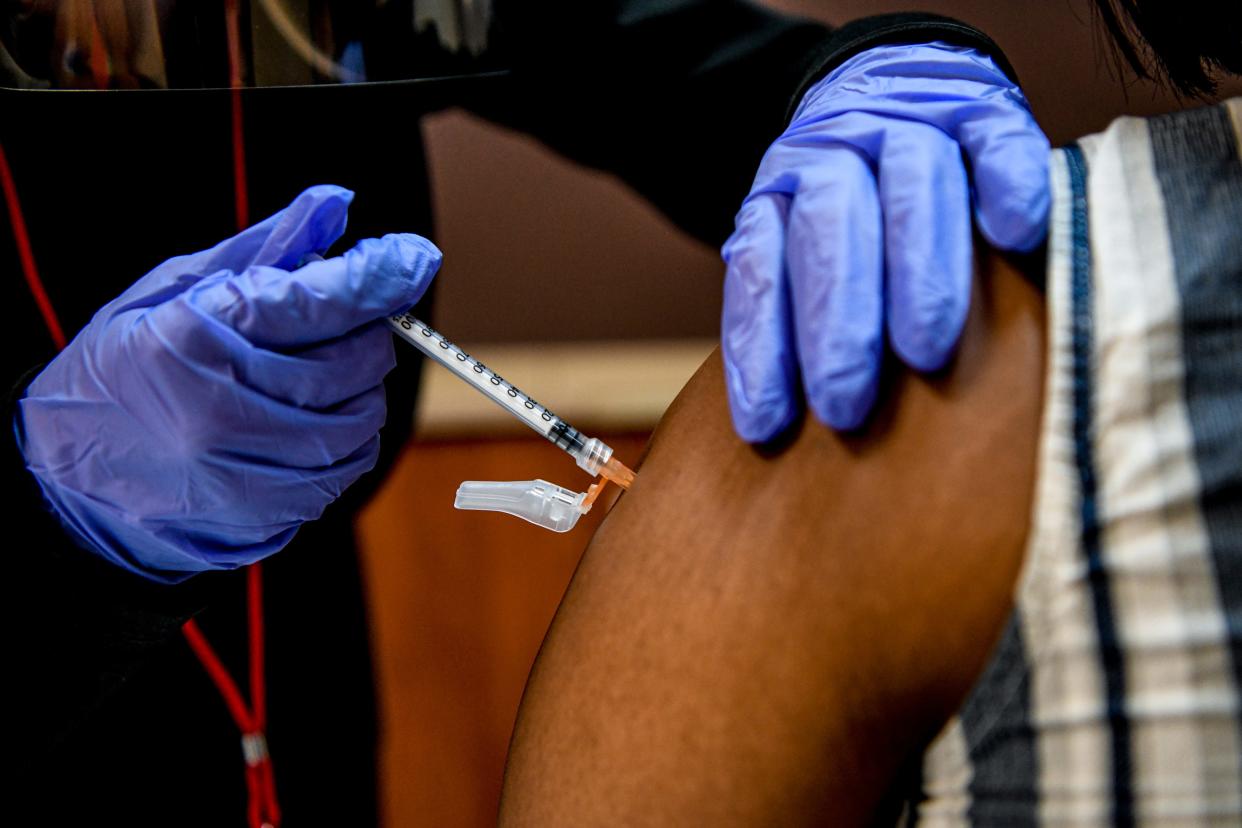COVID numbers looking much better for Florida hospitals, case counts and positive tests

- Oops!Something went wrong.Please try again later.
Most signs once again point to the latest COVID-19 wave receding across Florida, a week after big urban areas showed signs of a potential spike in infections.
New case counts, hospitalizations, tests that came back positive and sewage readings show declines in the coronavirus statewide, for the most part, to levels not seen since May, before the worst of the current COVID wave.
Health officials logged about 23,000 new infections in the past week across Florida, the U.S. Centers for Disease Control and Prevention reported Friday, down two-thirds from weekly sums logged during the worst of the summer wave in June and July.
Here come the mutations: 'Centaurus' COVID subvariant seeps into Florida while sister mutation spreads in Southeast
New boosters: New COVID boosters coming that target BA.4, BA.5 variants. Here's what you need to know
In the schools: Palm Beach County schools won't report positive COVID cases in classroom to parents
Hospital staff statewide tended to about 2,095 COVID-positive patients Friday, the U.S. Health and Human Services Department reports, less than half what was reported in July.
About 12% of tests in the past week have come back positive, about half the levels recorded two months ago.
The number of coronavirus particles found in five counties' wastewater remains flat or is declining.
Counties in Tampa Bay (Hillsborough), the Orlando area (Orange and Seminole) and South Florida (Palm Beach and Miami-Dade) posted flat or falling levels of viral molecules in their sewage compared with last week, according to Boston-based laboratory Biobot Analytics, which collects sewage samples nationwide.
Florida residents still at high risk of catching COVID
Only in Pinellas County, home to St. Petersburg, have sewage tests recorded an increase in coronavirus genetic material — 36% from Aug. 24 through Wednesday. The Tampa Bay-area county had 805 viral particles per milliliter of sewage, about the same level as in early August.
Even as infections recede, federal health officials say people in almost every county in Florida, and most parts of the nation, are at high risk of catching the airborne virus.
Only in the north Florida and Panhandle counties of Lafayette, Madison and Washington does the CDC classify coronavirus transmission as "substantial," compared with "high" everywhere else.
But the CDC also says that COVID case counts and hospitalizations are low enough in most of Florida that indoor masking is not necessary for reducing the potential strain on local hospitals.
The only areas of Florida where the CDC recommends masking indoors are Miami-Dade County and a cluster of counties surrounding Alachua, which ranges from Levy and Dixie on its south to Hamilton and Columbia on its north, bordering Georgia.
Florida's death toll climbed by 396 during the seven days ending Friday, a comparison of CDC and state Health Department data shows. That's on par with the weekly death toll health officials have recorded since July.
Deaths can take weeks to enter official statistics as local, state and federal governments verify and process them.
More than 7 million Floridians have been infected with COVID
COVID has killed at least 80,782 Floridians and infected more than 7 million.
That excludes more than 3,000 victims whom state auditors found by combing through records from 2020 in which physicians classified someone's cause of death as COVID, but the state Health Department did not.
About 81% of Florida residents have had at least one shot of the COVID vaccine, and about 29% have gotten boosters, the CDC reported Friday. Those ratios have barely changed since the start of summer.
Chris Persaud is The Palm Beach Post's data reporter. Email him at cpersaud@pbpost.com.
This article originally appeared on Palm Beach Post: Florida COVID infection case counts going down since summer
